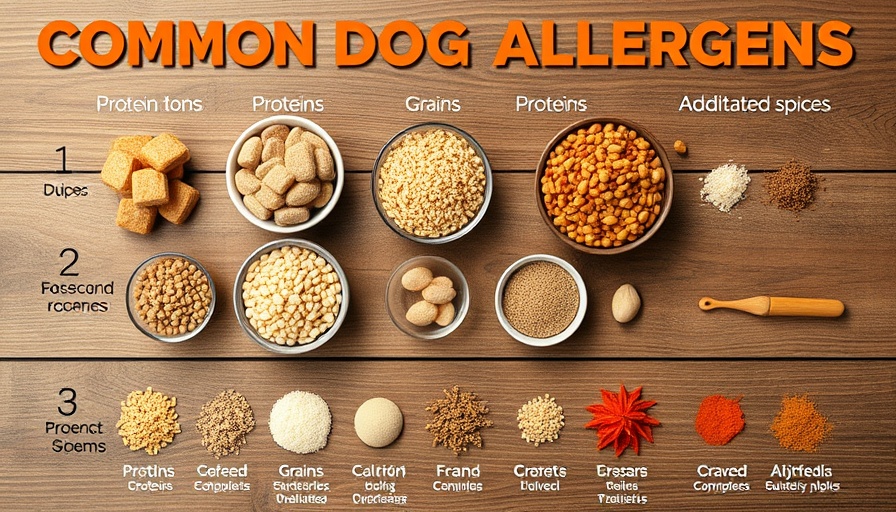
Understanding Food Allergies in Dogs and Their Management
As dog owners, witnessing our furry companions experience discomfort can be heart-wrenching. When dogs start scratching incessantly, licking their paws, or becoming picky with their food, it might signal that something is wrong, possibly a food allergy. Similar to humans, dogs can experience food allergies, which can lead to significant health issues if not managed appropriately.
What Sets Food Allergies Apart from Food Intolerances?
It’s critical for pet owners to distinguish between food allergies and intolerances. Allergies arise when a dog’s immune system mistakenly identifies certain food components as harmful, triggering symptoms like chronic itching, ear infections, and gastrointestinal upset. In contrast, food intolerances often stem from a dog’s inability to digest certain foods but don't involve the immune system. Understanding these differences is vital in determining the most effective course of action for your dog’s health.
Common Food Allergens Every Dog Owner Should Know
Many dogs develop allergies to proteins commonly found in their food. Here are the major offenders:
- Proteins: Beef, chicken, and lamb are staples in many dog foods but can cause issues with some dogs over time.
- Grains: For dogs with grain sensitivities, transitioning to grain-free options can help alleviate symptoms.
- Additives: Artificial preservatives and flavors, often used to enhance the appearance and shelf life of dog food, can also trigger allergic reactions.
Choosing high-quality dog food made with natural ingredients can significantly reduce the risk of food allergies.
Identifying Signs of Food Allergies in Your Dog
Being vigilant for signs of food allergies can make a significant difference in your dog’s well-being. Here are four indications to watch for:
- Skin Symptoms: Excessive scratching, redness, and hot spots are common signs. If these symptoms intensify after meals, it may be linked to their diet.
- Digestive Issues: Symptoms like persistent diarrhea, vomiting, or excessive gas can indicate food allergies. If you've seen recurrent digestive problems, an elimination diet may be necessary.
- Chronic Ear Infections: Recurrent infections, particularly those attributed to yeast, may suggest food allergies if they don’t respond to traditional treatments.
- Behavioral Changes: Changes in behavior, such as increased agitation or lethargy, can also stem from discomfort related to food allergies.
How to Manage Food Allergies Effectively
Managing food allergies in dogs is a multifaceted approach that often begins with consulting a veterinarian. A veterinarian may recommend starting an elimination diet to identify offending ingredients. Here’s how to create an effective elimination diet:
- Choose a Hypoallergenic Diet: This diet typically includes a limited number of ingredients to help pinpoint allergens.
- Strict Adherence: During the trial phase, it’s essential to avoid all other food, treats, or supplements not included in the veterinarian-approved diet.
- Monitor for Improvements: Observe your dog for signs of improvement during the 8-12 week period. Significant reductions in symptoms often confirm that the diet is effective.
Antihistamines or medications may also be prescribed to manage acute allergic reactions while engaging in dietary adjustments.
Future Considerations: Can Dogs Develop New Allergies?
It’s crucial for pet owners to remain vigilant, as dogs can develop new food allergies over time, even to proteins they have been consuming without issues for years. Regular monitoring for new symptoms and routine veterinary check-ups can help manage these challenges effectively.
Conclusion
Managing food allergies requires time and patience, but it is vital for improving your dog’s quality of life. If you suspect your dog has food allergies or intolerances, consult your veterinarian for guidance and support. With proper management, your furry friend can return to their happy, tail-wagging self.
 Add Row
Add Row  Add
Add 




 Add Row
Add Row  Add
Add 

Write A Comment